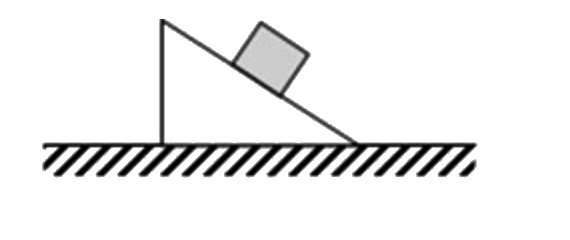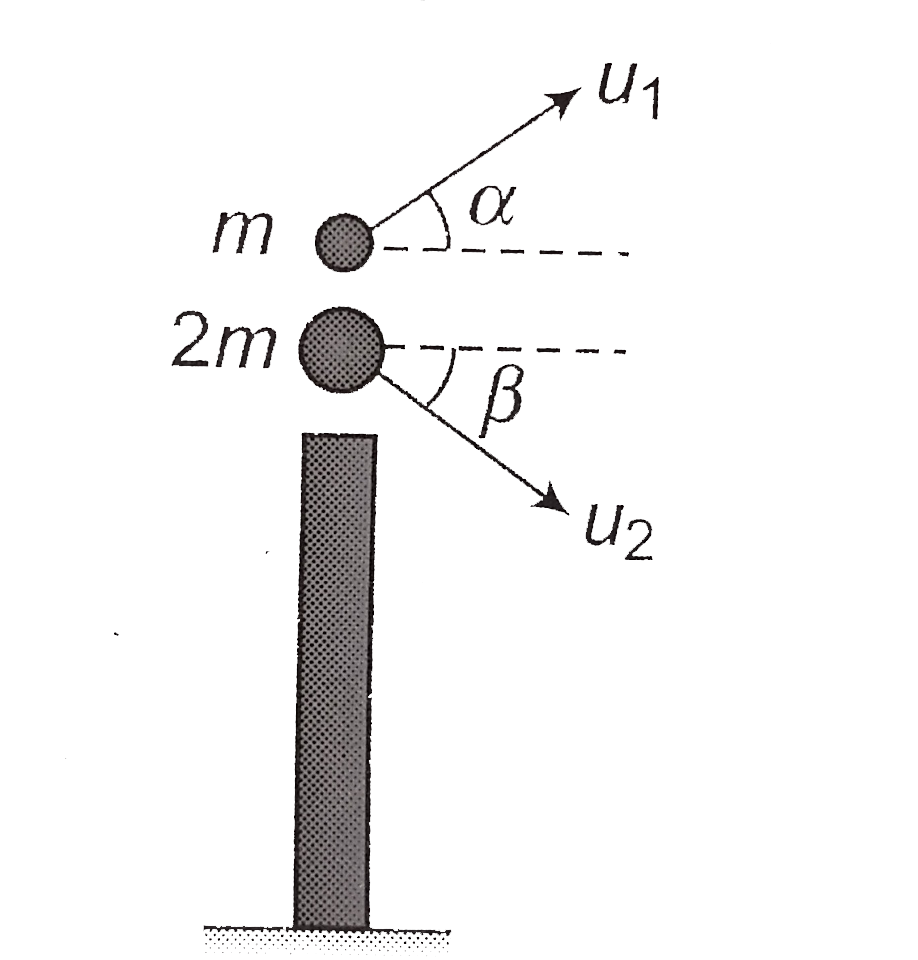Assertion: If there are no external forces, the center of mass of a double star moves like a free particle.
Reason: If we go to the center of mass frame, then we find that the two stars are moving in a circle about the center of mass, which is at rest.
If both assertion and reason are true and reason is the correct explanation of assertion.
If both assertion and reason are true but reason is not the correct explanation of assertion
If assertion is true but reason is false.
If both assertion and reason are false.
The correct Answer is:B
In our frame of reference, the trajectories of the stars are a combination of
(i) uniform motion in a straight line of the centre of mass and
(ii) circular orbits of the stars about the centre of mass.
Topper's Solved these Questions
- SYSTEM OF PARTICLES AND ROTATIONAL MOTIONSBOOK - NCERT FINGERTIPSCHAPTER - SYSTEM OF PARTICLES AND ROTATIONAL MOTIONSEXERCISE - NCERT Exemplar
8 Videos
- PRACTICE PAPERSBOOK - NCERT FINGERTIPSCHAPTER - PRACTICE PAPERSEXERCISE - Practice Paper 3
50 Videos
- THERMAL PROPERTIES OF MATTERBOOK - NCERT FINGERTIPSCHAPTER - THERMAL PROPERTIES OF MATTEREXERCISE - Assertion And Reason
10 Videos
Similar Questions
In a double star, two stars (one of mass m and the other of mass 2m) distance d apart rotate about their common centre of mass., Deduce an expressioin for the period of revolution. Show that te ratio of their angular momenta about the centre of mass is the same as the ratio of their kinetic energies.
View SolutionTotal work of pseudo forces in center of mass frame.
Show that total work done in center of mass frame on all the particles of a system by pseudo forces due to acceleration of mass center is zero.
View Solution
Knowledge Check
If there are no external forces, the centre of mass of a double star moves like a free particle.
If we go to the centre of mass frame, then we find that the two starts are moving in a circle about the centre of mass, which is at rest.AIf both assertion and reason are true and reason is the correct explanation of assertion.BIf both assertion and reason are reason are true but reason is not the correct explanation of assertion.CIf assertion is true but reason is falseDIf both assertion and reason are false.The center of mass of a system of two particles divides the distance between them.
Ain inverse ratio of square of masses of particles.Bin direct ratio of square of masses of particles.Cin inverse ratio of masses of particles.Din direct ratio of masses of particles.Assertion: We can apply τ=Iα about the centre of mass of the system in non-inertial frame of reference.
Reason: Torque of pseudo forces about centre of mass is zeroAIf both assertion and reason are correct and reason is the correct explanation of the assertion.BIf both assertion and reason are correct but reason is not the correct explanation of assertionCIf assertion is correct but reason is incorrect.DIf assertion is incorrect but reason is correct
In the shown figure, if all the surface are smooth and the two masses are allowed to move then center of mass of the system will move

View SolutionObtain an expression for the centripetal force F acting on a particle of mass m moving with velocity v in a circle of radius r . Take dimensionless constant K = 1 .
View SolutionAssertion: If a projectile explodes in mid air, then no external force acts on the projectile during explosions.
Reason: Center of mass in this case follows the same path.
View SolutionTwo balls are thrown simultaneously from top of tower in air as shown in the figure.
(i) The acceleration of the center of mass of two balls while in air is equal to g.
(ii) The path followed by the center of mass is parabola.
(iii) The path followed by the center of mass will change if one ball after striking the ground comes to rest.

View SolutionWhich of the following is true for center of mass ?
(i) The center of mass of a body may lie within , outside , on the surface of the body.
(ii) In the case of symmetrical bodies , the center of mass coincides with the geometrical center of the body.
(iii) In the absence of external forces , the center of mass moves with constant velocity.
(iv) If external forces are absent and system is initially at rest, then location of center of mass is fixed.
View Solution